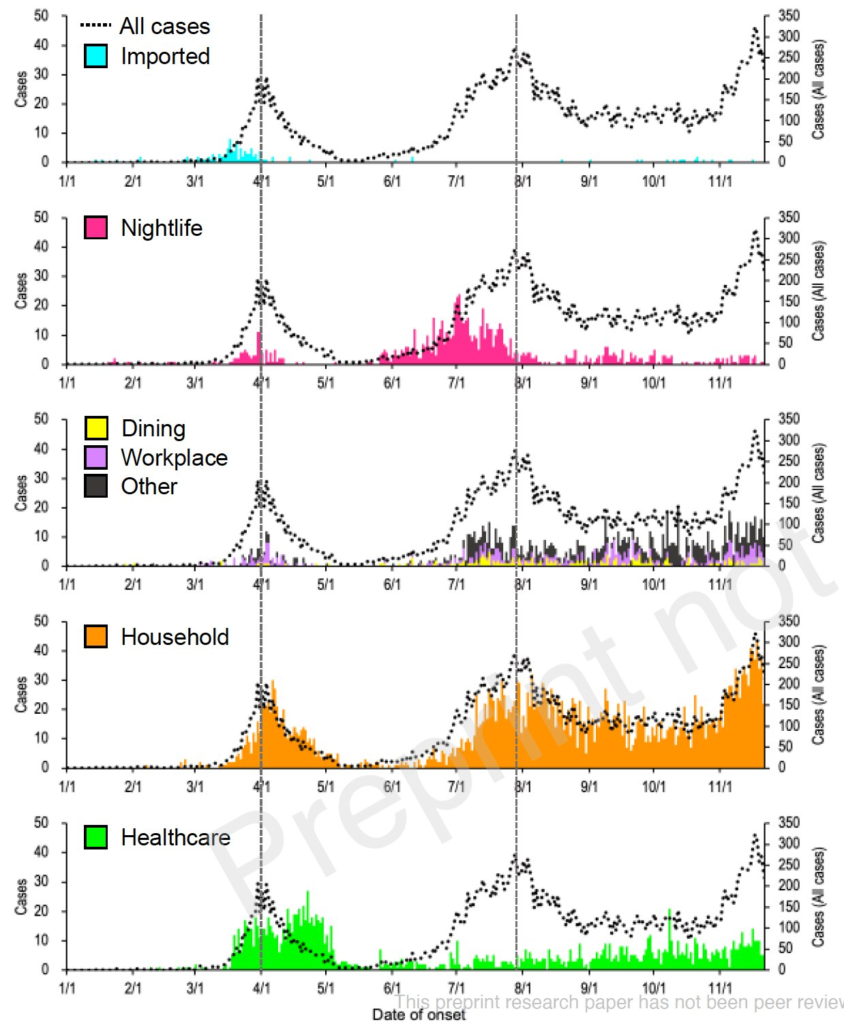Live Attenuated Virus Vaccines
This paper from Massachusetts found that vaccination with the tuberculosis BCG vaccine gave a 92% efficacy against COVID-19. (Also see this mass media article, which talks about other studies too.) BCG is a live attenuated virus vaccine (LAV); I’ve talked about LAVs before and how they appear to boost the innate immune system and have a page on non-COVID-19 vaccines which help against COVID-19 as well here.
The thing that is interesting is that different studies on BCG effectiveness find effectivenesses that are all over the map. The Massachusetts study showed great effectiveness of BCG against infection, as have ones from Greece and UAE. However, studies in Netherlands, South Africa, and Italy found about 0% effectiveness. Wha??
I am guessing that it has to do with which BCG vax was used. There are a lot of different manufacturers using a bunch of different strains. I think we’ll find out that the X strain produced by the Y company will work and others won’t. Now we just have to solve for X and Y.
Transmission
This preprint from Portugal says that protection from a BA.1 or BA.2 infection against infection against BA.5 wanes significantly over time.

This article (reporting on this Research Letter) reports on a Swiss study of HCW which looked at risk factors for COVID-19 infection:
- masks:
- weren’t exposed to COVID-19 patients: 13% got COVID-19 during the study period
- were exposed to COVID-19 patients, always wore a FFP2 (N95-class) respirator: 21% got COVID-19
- were exposed to COVID-19 patients did not always wear a FFP2 respirator: 35% got COVID-19
- duration of exposure:
- >2 to 4 hours of exposure: 25% got COVID-19
- >8 to 16 hours: 32.9% got COVID-19
- >64 hours: 42.7% got COVID-19
- working full-time: +39% risk
- household member has COVID-19: 7.79x risk
- being a smoker: -32% risk

This paper from Japan seems to indicate that closing bars was a good idea. They looked at a bunch of different settings and found that nightlife settings were most likely to cause onward transmission.

This preprint from the USA stuck people with COVID-19 in a lab and measured how many virus particles they produced while breathing, talking, speaking, and screaming (plus coughing and sneezing if it happened naturally, they didn’t provoke coughs or sneezes). They found wide variation person-to-person, but did not find a statistically significant difference between Alpha, Delta, and Omicron variants. (All of those had a lot more virus shedding than the original.) (Here’s a mass-market article which describes the study.)

They were able to grow cells from Delta and Omicron, but didn’t grow any from Alpha or COVID Classic, but I don’t know if that was due to small sample size, because they just didn’t try very hard, or what.
Long COVID
This paper from the UK found that different Long COVID symptoms took very different times to drop down to the normal level of those symptoms:
- mood disorders: 43 days to return to risk baseline and 457 days to equal-incidence;
- anxiety disorders: 58 days to return to risk baseline and 417 days to equal-incidence;
- brain fog, dementia, psychotic disorders, and epilepsy or seizures: still increased risk at 2 years.
(What does the period “to risk baseline” mean? Basically, after that time, you are no more likely to come down with <whatever> than people who did not catch COVID. (Yes, the data says that, for example, even two years after COVID, thinking you were in the clear, you might still come down with brain fog.) “Equal-incidence period” means that after that period, the people who had COVID-19 are no more likely to have <whatever> than the control population.)
In children, the times were different:
- brain fog: 75 days to return to risk baseline and 491 days to equal incidence.


Treatments
This paper out of China says that they were able to find really good monoclonal antibodies by vaccinating mice with both with SARS-CoV-2 and SARS-1 vaccines! (And then looking in the blood for monoclonal antibodies, but that’s kind of standard. It’s using two different Sarbecoviruses (bat family coronaviruses) that’s the secret sauce here.)
This paper from BC reports finding an antibody fragment (called VH ab6) that neutralizes all major variants.
Mental Health
This article reports that a study found that 56% of employed Canadian parents feel that their children’s mental health is worsening.
Pathology
This paper from the USA says that people who were hospitalized with COVID-19 were significantly more likely than those hospitalized with influenza to have venous thromboembolism within 90 days afterwards.(In other words, COVID-19 is not the flu.)
This paper from Los Angeles found that 56% of people who acquired COVID-19 antibodies in their blood over a three month period in late 2021 (i.e. first test negative, second test positive) had no clue that they’d had COVID-19.
Recommended Reading
This blog post from the USA is a nice summary of multiple recent Long COVID studies. I don’t think there’s anything I didn’t say, but he says it differently.
Last week, a cool paper came out on biomarkers of Long COVID. If you are a Long COVID geek, you might want to check out this Twitter thread from one of the principal authors about interpretation, what the limitations of the study were, and plans for future study. tl;dr: “Yes, I know it was limited, it was a pilot, we’re going to study lots more!”
